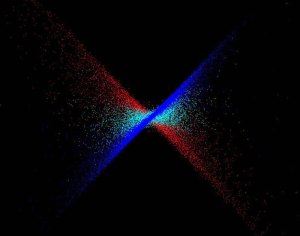When you go to sleep tonight maybe you’ll be like Hemingway’s old man and dream about the lions. Or the snakes. Or being late for a plane. Or flying without an airplane. Or flunking a test. Or any of a multitude of other dreams. But you will dream.
Nobody knows for sure why. We spend about two hours a night dreaming. Freud thought it had to do with subconscious desires. More likely, dreaming is a part of the process of transferring and synthesizing stimuli. It may be an integral part of learning. That may be when we transfer information from the hippocampi to the neocortex for long-term memory.
We’re not the only dreamers. All mammals dream and in ways similar to humans. That’s not a surprise; mammals’ brains are built pretty much the same, with a cortex governing complex processes and behavior. Mammals sleep in stages; successive episodes of slow wave sleep (SWS), intermediate sleep (IS) and rapid-eye movement (REM) sleep. As the night progresses there is relatively less SWS and more REM.
Dreaming occurs during REM sleep when the brain’s cortex is active. That’s why we thought that a cortex was required for dreaming. Birds and reptiles don’t have one and no one has ever caught a reptile or a bird dreaming.
Until recently.
Birds were known to have periods of non-rapid eye movement sleep (NREM) but only very short bursts of REM sleep. Nor were birds known to have a sleep-stage structure similar to mammals.
But now comes news that Zebra Finches, and presumably other passeriformes (songbirds) sleep in stages much like ours and spend time dreaming. Conclusion? Dreaming does not require a cortex.
And that raises all kinds of questions. For instance, if a cortex is not required for structured sleep, why has evolution designed two entirely separate mechanisms for doing just that? If it has, dreaming must be really important. Perhaps we can learn more about our own dreaming from birds’ dreams.
Are bird brains a great deal more complex and capable than we once thought? (The answer to that is almost surely, yes. We’ve already observed similarities in our brains and avian brains at the molecular and cellular level. A cortex may not be such a big deal after all.)
Why have we now seen this type of sleep structure in song birds but not other birds? (Perhaps because songbirds must learn more complicated songs and behaviors? Or maybe we’ve just missed it in other birds? Some parrots and hummingbirds learn vocalizations and they don’t seem to dream.)
Finally, what do birds dream about? And how would we ever know? We can’t even really describe our own dreams. As Marlow says, describing the beginning of his journey into Conrad’s Heart of Darkness,
“It seems to me I am trying to tell you a dream — making a vain attempt, because no relation of a dream can convey the dream-sensation, that commingling of absurdity, surprise, and bewilderment. . . , that notion of being captured by the incredible which is of the very essence of dreams. . . .No, it is impossible; it is impossible to convey the life-sensation of any given epoch of one’s existence — that which makes its truth, its meaning, its subtle and penetrating essence. It is impossible. We live, as we dream — alone….”
But not as alone as we once thought.
________________________
The entire scientific paper upon which this entry is based can be read here. From the paper comes this two dimensional view of a computer model of the finches dreaming. Every dot corresponds to three seconds of a bird’s sleep, SWS in blue, IS in cyan and REM in red. (Image courtesy of Dr. Phillip Low, the article’s lead author.)
Tags: Dreaming, Dreaming Birds, Dreams, Evolution, Neuroscience



July 22, 2009 at 3:05 pm |
FatFinch:
I just found this page re Zebra Finches and REM sleep doing a google search about neuroscience. Thanks — birds are amazing creatures! What is that beautiful gray image with the yellow on it? It looks like an image of neurons. If so, what imaging techniques were used, and what species is it? And can I get permission to reproduce it as a larger image to put in my office?